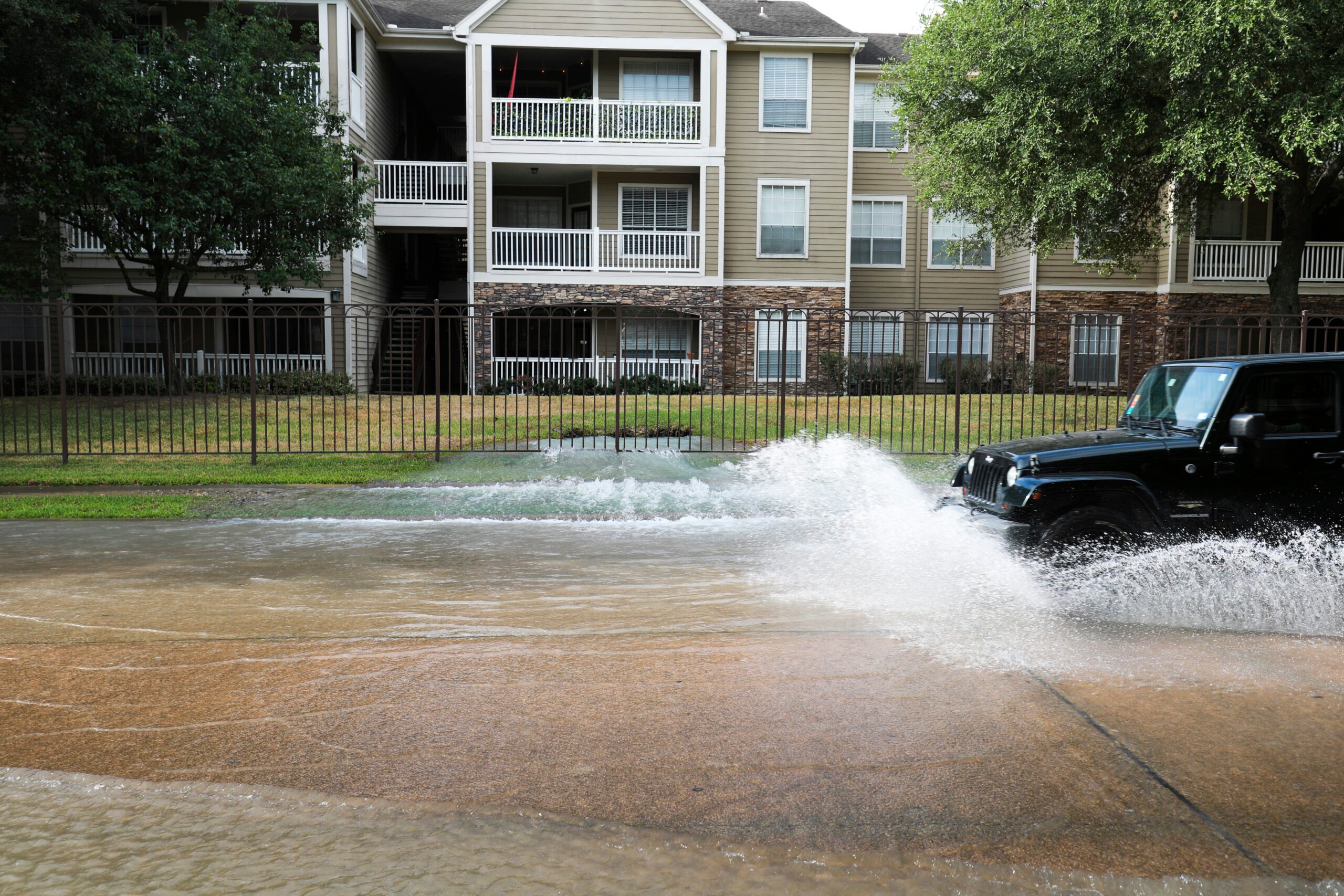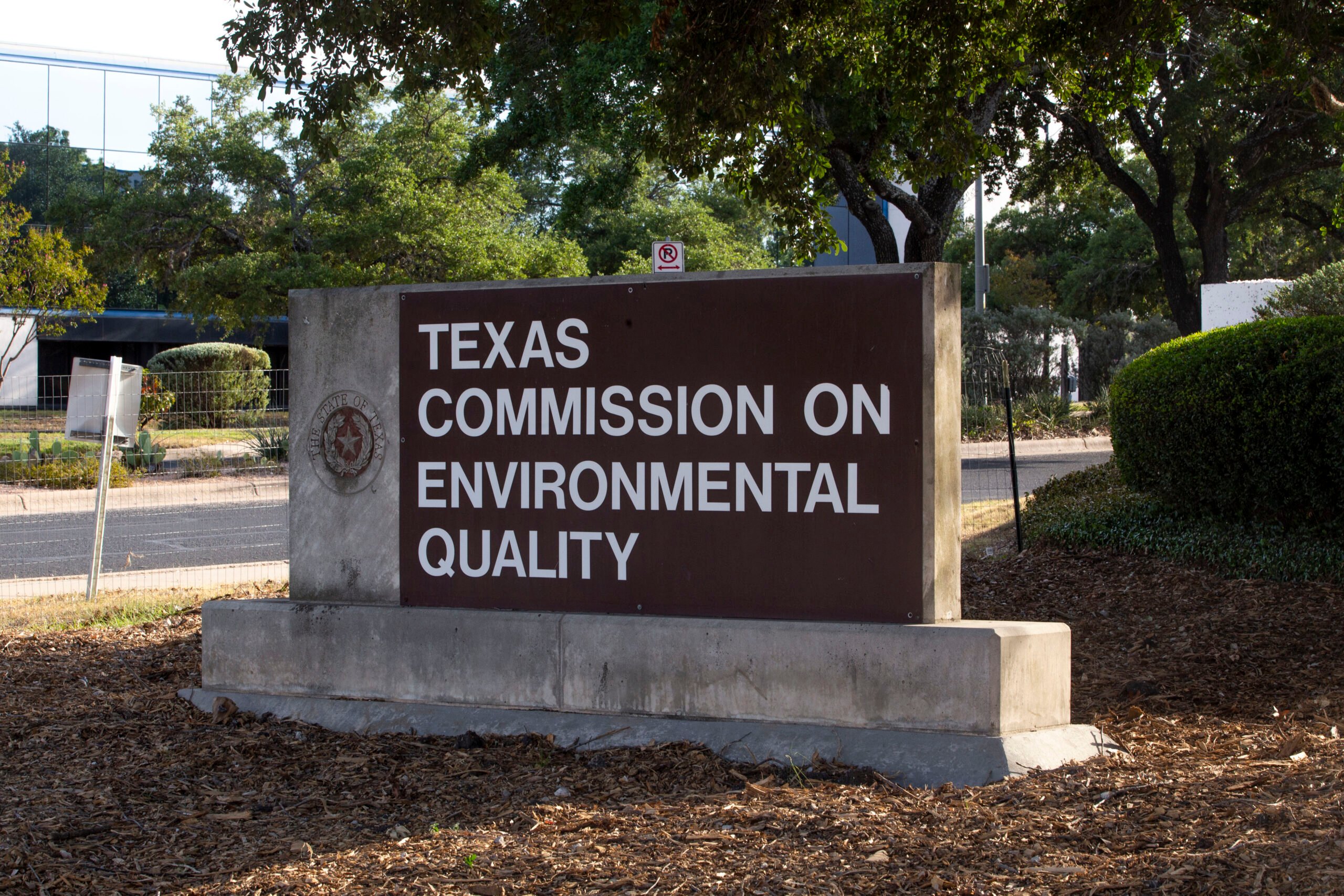
Record Summer Heat Causes Costly Damage to State Water Infrastructure
Conservationists are frustrated as cities contend with thousands of costly leaks as dry soil contracts, causing underground pipes to rupture.

This article originally appeared on Inside Climate News, a nonprofit, independent news organization that covers climate, energy and the environment. It is republished with permission. Sign up for their newsletter here.
Editor’s note: Be sure to read Delger Erdenesanaa’s interview with water policy expert Jennifer Walker, part of Drifting Toward Disaster, our series on the future of Texas waterways.
The hottest summer on record for many Texas cities has brought millions of dollars in damage to municipal plumbing and the loss of huge volumes of water during a severe drought.
Authorities across the state are struggling to keep up with widespread leakage even as they plead for water conservation and have restricted outdoor water use. The impact on Texas’ water systems highlights both the vulnerability of basic infrastructure to a warming climate and the high costs of adaptation.
“The intense heat and drop in annual rainfall have dried up the soil, causing a shift in water lines,” said Erin Jones, a spokesperson for the city of Houston, which logged its hottest summer on record this year. “When the pipes shift, the pipe joints can break, causing water leaks.”
She said the municipal government in Houston was taking 500 calls per week for water leaks, up from 300 around this time in 2022, when drought conditions were less severe. The city, which budgets almost $20 million annually for water line repairs, has authorized an additional $33 million in spending this year to bring in contractors to help municipal workers with repairs, Jones said.
In addition to the dry, shifting soil, the leaks result from the brittleness of aging pipes and a high demand on the city’s water infrastructure despite the conservation appeals and edicts. “The demand on the system continues to increase due to customers’ using more water and increased water leaks,” Jones said.
Leaking pipes cost Texas billions of gallons of water and hundreds of millions of dollars annually. Texas water utilities reported 30.6 billion gallons lost to breaks and leaks in 2021, the most recent year for which data is available. The Texas Water Development Board, a state water authority, estimated an additional 101.6 billion gallons of unreported loss that year.
Those losses collectively accounted for 12 percent of total reported water use and cost the state an estimated $266 million (which considers the production cost of the water lost, not the repairs to busted pipes) in 2021. That year, Texas enjoyed below-average summer temperatures and a near-total absence of drought conditions. The figures for this year, which will not be published until 2024, are likely to show far higher loss rates and attendant costs.
This year, record-breaking temperatures hit Texas in late June and lingered through early September — part of a global heat wave that also set records from China to Morocco to Bolivia and made this summer the world’s hottest since at least 1940.
The U.S. Drought Monitor currently shows more than half of Texas experiencing “severe drought,” and nearly one-third “extreme drought.” The groundwater in aquifers is declining, and some reservoirs are nearing alarmingly low levels.
For the state as a whole, this summer was the second-hottest on record, ranking behind 2011 and ahead of 2022, according to John Nielsen-Gammon, director of the Southern Regional Climate Center at Texas A&M University. (For meteorologists, summer runs from June through August.)
For several cities in addition to Houston, it was the hottest. Among them was San Antonio, where water main breaks averaged about 470 per month from January to June and then jumped to 725 in July and 1,076 in August as extreme heat bore down.
And that doesn’t factor in the burden borne by others for repairs to pipes on private property tying water mains to homes and businesses. “It’s been a rough summer,” said Anne Hayden, a spokesperson for the San Antonio Water System.
Laredo, where the season tied the summer of 2011 as the hottest on record, spent $464,000 on 89 water main repairs in July and August, according to the city water utility, up from $106,000 on 72 repairs in 2021.
Fixing even a minor break can be pricey because pipes typically lay beneath roadways. In Austin, repairs can cost the city anywhere from $5,000 and $10,000 per incident, according to Joe Hoepken, a supervising engineer at Austin Water.
“Typically a repair is going to entail ripping into asphalt or concrete,” Hoepken said. “Then it’s cutting out a few feet of the bad pipe that ruptured and sleeving on a section of newer pipe.” After that, the city transportation department resurfaces the spot where repairs took place.
Austin repaired 464 water mains and service lines in July and August, up from 300 in 2021 and 435 in 2022.
In West Texas, KOSA News reported a surge in water main breaks disrupting service for customers in Midland late last month. And in North Texas, KJTL News reported a similar increase in Wichita Falls.
Even before this summer’s damage, Texas cities were struggling to keep up with the costs of addressing water leaks, said Perry Fowler, executive director of the Texas Water Infrastructure Network, a water-sector lobbying group.
He said that state legislators had that in mind this year when they authorized the creation of a $1 billion Texas Water Fund that will provide aid to water supply and wastewater projects across the state. Voters will decide on the measure, known as Proposition 6, in a referendum in November.
Fowler said that while the fund would help finance repairs of water leaks, it won’t solve the overarching problem.
“It’s a significant amount, but it’s not going to be substantial enough to have a water infrastructure investment renaissance in Texas,” he said. “The challenges out there with the aging infrastructure are widespread.”



